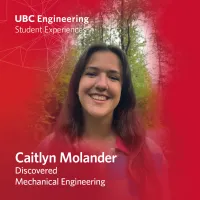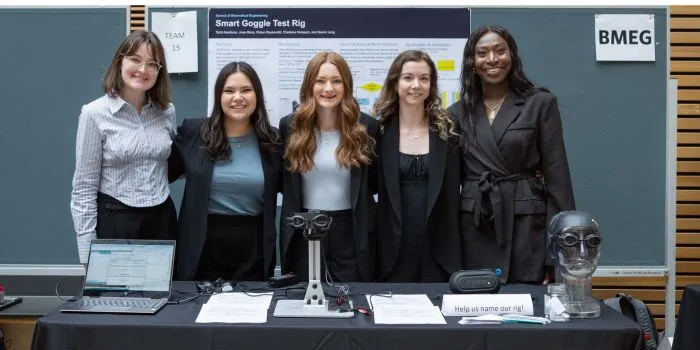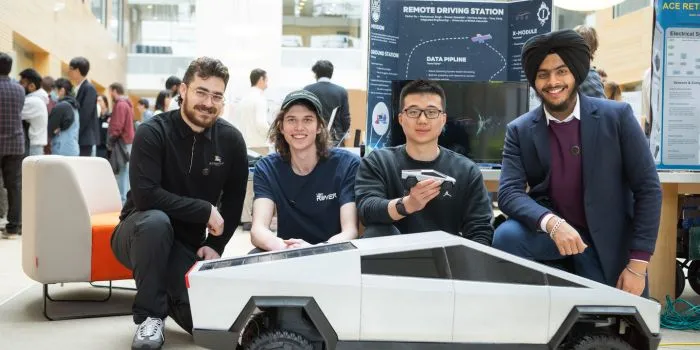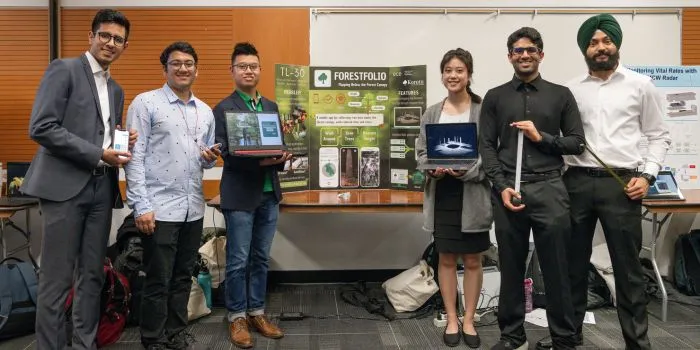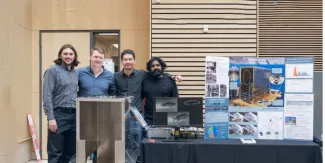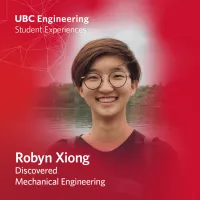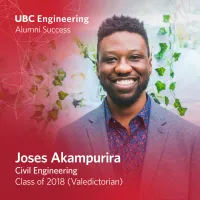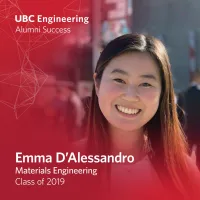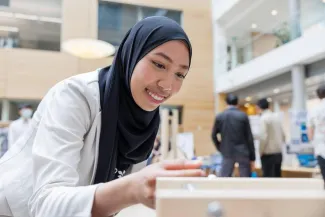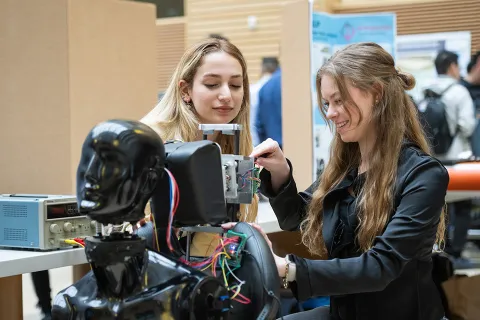
Engineering is an exciting area of study because it’s all about learning and applying knowledge. You start by building up a strong foundation in the fundamentals of science and math throughout your degree. You’ll then use that understanding to build and create solutions to challenges large and small.
“As engineers, we spend a lot of time learning how the universe works—learning how matter and energy behave so we can predict what’s going to happen under certain conditions, and using that to design new processes or devices,” says Dr. Gabriel Potvin, an Associate Professor of Teaching at UBC Chemical and Biological Engineering.
“What’s really exciting for engineers is the opportunity to apply their technical knowledge to shape outcomes and design solutions to specific problems or to achieve desired goals. That could be coming up with a better door hinge or designing a particle accelerator to collide subatomic particles together at close to the speed of light.”
UBC Chemical and Biological Engineering Dr. Gabriel Potvin
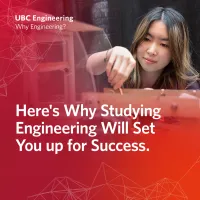
Capstone projects bring it all together
For many students, capstone projects are a highlight exemplify what makes engineering such a fun and rewarding area of study. Over two semesters, you’ll be part of a team working with an industry partner to come up with a solution to a real-world problem. Here are just a few recent projects:
When reflecting back on their capstone projects, students emphasize time and again the value of working on a large-scale project where they can bring together and apply all the knowledge they’ve acquired over their degree.
As a group of Civil Engineering students said about their capstone project: “There’s great pride that comes from stepping back and realizing how much knowledge we’ve gained over the degree, both in our classes and co-op positions. It’s sometimes hard to have an accurate sense of your skills or knowledge because civil engineering includes such a vast range of topic areas that you need to cover. But for this project, we had to apply our knowledge from so many areas, and it was rewarding to recognize that we know a lot!”
Build a successful career
Engineering is a great career choice for people who like to build and create things, and who don’t want to spend their entire working life sitting at a desk staring at a computer screen (unless they’re computer engineers!).
If you read through profiles of UBC alumni, you’ll learn how rewarding they find it to apply their knowledge to improve our built environment, make a better product or design a better solution.
“A lot of the projects I’ve worked on, I can now use as an end user, whether I’m riding my bike or taking the bus,” says civil engineer Joses Akampurira, who worked on multi-million dollar infrastructure projects for the City of Surrey.
Check out profiles of other alum, like Arjun Venkatesh, who designed circuit boards and motor drives used by Boston Dynamics’ robots, and Emma D’Alessandro, who is leading a project at Boeing to use biobased feedstock in products used to prevent corrosion.
